The Use Of Animal Glue
General
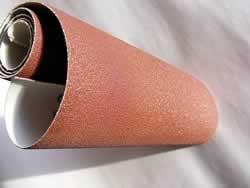 Animal
glue or technical gelatin has many uses that depend on it’s gelling or on
it’s surface properties. The most common use for animal glue is as an adhesive
solution where its gap filling properties added to its great dry strength
are its main advantages. However animal glue must penetrate the surfaces
to be bonded so one must ensure that the penetration of the liquid occurs
before the glue gels. Surfaces can be joined with animal glue if one of
the surfaces is permeable to water. In practice animal glue is used hot
and sufficiently so to ensure penetration before gelation. The rapidly developed
tackiness of animal glue as it sets to a gel makes it useful in such application
as sticking cloth to wood, bookbinding, in the manufacture of cartons on
high speed machines and manufacture of “gummed” tape.
Animal
glue or technical gelatin has many uses that depend on it’s gelling or on
it’s surface properties. The most common use for animal glue is as an adhesive
solution where its gap filling properties added to its great dry strength
are its main advantages. However animal glue must penetrate the surfaces
to be bonded so one must ensure that the penetration of the liquid occurs
before the glue gels. Surfaces can be joined with animal glue if one of
the surfaces is permeable to water. In practice animal glue is used hot
and sufficiently so to ensure penetration before gelation. The rapidly developed
tackiness of animal glue as it sets to a gel makes it useful in such application
as sticking cloth to wood, bookbinding, in the manufacture of cartons on
high speed machines and manufacture of “gummed” tape.
Other examples of its uses as an adhesive is in woodworking, cardboard case closing, match head bonding to the stick and the bonding of abrasives to paper for use as sandpaper.
The glue on drying forms a very strong film. This film forming property is used in paper seizing and cardboard manufacture and for decorative picture frame moldings.
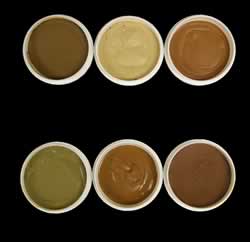 Glue
films are so strong that as they dry and shrink, if the glue is well keyed
to glass the drying film rips some glass from the surface. This is the basis
for the process called glass chipping and is also the reason why you never
let glue dry in a glass container.
Glue
films are so strong that as they dry and shrink, if the glue is well keyed
to glass the drying film rips some glass from the surface. This is the basis
for the process called glass chipping and is also the reason why you never
let glue dry in a glass container.
Animal Glue being a protein does not burn and this property is used to control the rate of combustion of dry match head formulations, as well as in fireworks and in firearm propellants. Animal glue solution gels on cooling and this property is used in retaining match heads on match sticks during the drying process and in the manufacture of printing machine rollers.
To prevent glue solutions from drying, polyhydric alcohol humectants can be added to the solution before gelation.
Finally, gelatin modifies the deposition environment (zeta potential) during electroplating allowing a smooth surfaced ingot to be formed in place of an ingot full of spikes, due to uneven electrolytic deposition of metal from solution. The glue also improves the efficiency and cost of deposition. In refining metal the glue is used as an additive in the electrolytic process. Especially used in refining copper.
Uses Of Animal Glue
- Adhesives
- Wood fillers
- Woodworking
- Furniture
- Coating & sizing
- Binding agent
- Abrasives / polishing
- Matches
- Electrolytic metal refining and plating - copper
- Paper manufacture / coating
- Gummed tapes
- Cleaning compounds / disinfectants
- Cardboard / container boxes
- Printing processes
- Glass chipping
- Book binding
- Fireworks / Firearm propellant powder
- Decorative moldings / Picture frames
- Musical instruments
- Luggage & Leather
- Ballistics
- Stationery
- Microencapsulation
- Paintballs
- Art canvas sizing
Bone and Hide Glue
Grade Choice
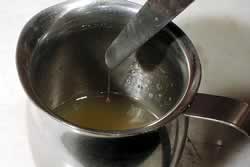 For
all but a few uses, where the impurities in the glue may have important
affects, the choice of glue depends on the physical properties required
and the source of the glue, whether bone or hide is of no consequence. It
is often sufficient to specify a glue in terms of the jelly strength though
it may be desirable to specify also the viscosity or a setting time or setting
temperature.
For
all but a few uses, where the impurities in the glue may have important
affects, the choice of glue depends on the physical properties required
and the source of the glue, whether bone or hide is of no consequence. It
is often sufficient to specify a glue in terms of the jelly strength though
it may be desirable to specify also the viscosity or a setting time or setting
temperature.
Type Choice
Animal glue can be obtained in a variety of solid forms (cake, pearls, cubes, granules, powder) which have to be dissolved to give the glue solution. The form of the solid has no significance except insofar as it affects the ease of dissolving under the chosen conditions. Jelly glues, which are ready for use on warming, are very convenient to use where smaller quantities are required, and is cheaper than dry glue.
Dissolving Glue
When stirring machinery is available, glue solutions can be prepared by adding dry powdered glue to hot water. The temperature of the water should be such that it drops to about 60oC after the addition of the glue. The mix is then stirred at this temperature until the glue has dissolved. An initial temperature of about 80oC is satisfactory when concentrated solutions are being prepared.
If solutions are to be prepared without mechanical stirring, the glue should be soaked in cold water until the water has penetrated to the centre of every particle. The time required depends on the state of subdivision. For powdered glue 15-30min may be sufficient but cubes or pearls may require one or two hours. After swelling the glue will dissolve very readily on warming with gentle hand stirring.
Concentration of Solutions
In general the solutions are required to be at the maximum concentration at which they can be spread easily. This depends on the grade, or more exactly the viscosity of the glue. Since, however, glues are graded mainly by jelly strength and since there is some correlation between jelly strength and viscosity, concentrations are recommended in terms of jelly strength. The concentration is, moreover, not at all critical. Below is a rough guide.
| APPROXIMATE QUANTITIES FOR MAKING UP GLUE SOLUTIONS | |
|---|---|
| Bloom jelly strength (12 ½ %) | Parts water to 1 part glue (by weight) |
| 50 | 1 |
| 100 | 1 1⁄3 |
| 150 | 1 1⁄2 |
| 250 | 2 |
Preservation of Glue Quality
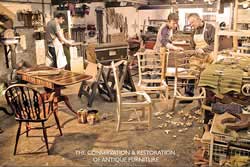 The
viscosity and jelly strength are not completely stable properties and can
be reduced by mishandling solutions. The glue is said to be degraded, which
can be taken literally to mean reduced from a higher grade to a lower grade.
Degradation is caused by prolonged heating or by action of bacteria and
micro-organisms. Unnecessary heating should therefore be avoided. In general
it is both undesirable and unnecessary to heat glue solutions above 60oC.
At 80oC the degradation is about four times as great as at 60oC.
On boiling solutions degradation is very rapid. Storage very important –
avoid direct sunlight and store in cool areas.
The
viscosity and jelly strength are not completely stable properties and can
be reduced by mishandling solutions. The glue is said to be degraded, which
can be taken literally to mean reduced from a higher grade to a lower grade.
Degradation is caused by prolonged heating or by action of bacteria and
micro-organisms. Unnecessary heating should therefore be avoided. In general
it is both undesirable and unnecessary to heat glue solutions above 60oC.
At 80oC the degradation is about four times as great as at 60oC.
On boiling solutions degradation is very rapid. Storage very important –
avoid direct sunlight and store in cool areas.
Advantages
Ease of preparation, flexible application, characteristics suitable for spreading machines, low average costs, respect for the environment and unlimited shelf life are just some of the main advantages of using animal glues.
Jelly Glue
These are water-based adhesives whose essential ingredient is collagen, a natural polymer. Collagen proteins, derived from natural sources, are mixed with other safe ingredients including sugar, Epsom salts, glycerin and water.
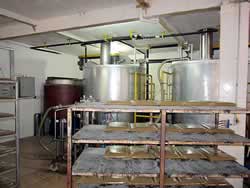 Generally
JELLY GLUE bonds surfaces which are water sensitive, such as paper, board,
cloth, foam, backed vinyl fabrics and the like. These products are characterised
by strong initial tack properties, along with the proper set time, clean
machining, and pleasant odor and provide long adhesive mileage.
Generally
JELLY GLUE bonds surfaces which are water sensitive, such as paper, board,
cloth, foam, backed vinyl fabrics and the like. These products are characterised
by strong initial tack properties, along with the proper set time, clean
machining, and pleasant odor and provide long adhesive mileage.
When using our jelly glue – it should be melted, preferably in a temperature –controlled, jacketed gluepot, or pre-melt tank to 60-65oC. It may be used undiluted or diluted to your preferred viscosity with clean hot water. Hot jelly glue is applied to one of the surfaces to be bonded, and the surfaces are joined and compressed. The adhesive surface cools and the bond forms. It can be applied by a wide range of highly sophisticated equipment, or it may be applied with standard bench type gluers, brushes or rollers.
Jelly glues clean up easily with hot water. This makes it easy to keep smelters and application machinery clean, and helps insure good adhesion and adhesive mileage. Our products offer excellent adhesion performance, and non-warp characteristics.
Common machine names used with the above jelly glues are Horauf, Kolbus, Crathern, Perondi to name a few.
